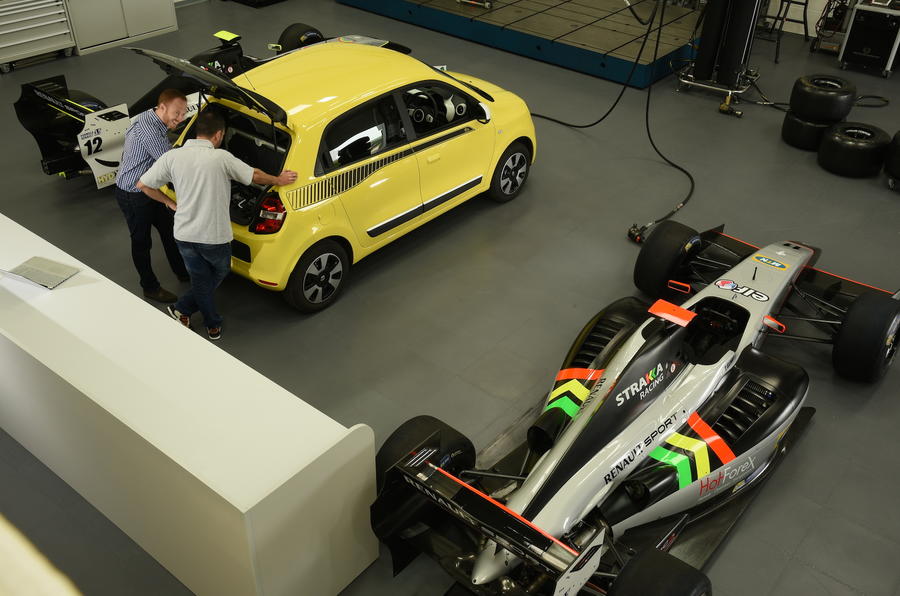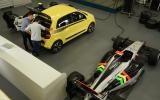The third-generation Renault Twingo is something of a departure from that which has gone before it.
Generation one (which never made it officially to the UK) and recently replaced second generation car two were both monobox designs with three doors. The styling of the latest Twingo — the newest addition to our long-term fleet — has more in common with the old Renault 5, and it has now grown into a city car-size five-door hatchback.
Like the original incarnation, this third-generation Twingo stands out from the rest of the class thanks to its bold styling and colour options, and our long-termer is a great example of this.It’s certainly no wallflower; the Inca Yellow paint turns heads on suburban streets and the decals on the sides, white exterior pack and snub-nosed shape help it to stand out even more.
Inside, things are slightly more subtle. Our car comes with an optional leather steering wheel and white touches that lift what could otherwise be a rather sombre dashboard.The interior is also a move away from those of the previous Twingos.
The digital central speedometer has gone and is replaced by a traditionally located analogue dial with a digital sub-display inside it, while the centre of the dashboard looks like those in most other cars until you attach the smartphone holder that juts out of it.
Do so and you can then connect a smartphone to the car using an app that includes audio playback, Bluetooth hands-free phone calls, a trip computer, a rev counter and sat-nav. I’m looking forward to seeing how it works. It seems like a clever move by Renault and is standard on our Play-spec Twingo, which also comes with air conditioning and is our pick of the range because it brings with it a sub-£10,000 price tag.
Front occupants have plenty of room. The rear seats are only for two people. Leg room isn’t awful compared with that of rival cars, but it is worth noting that even with the adjustable rear seatback in its most reclined position, the seats are very upright and could be uncomfortable on longer journeys.
Besides the styling, the biggest difference between the Twingo and the rest of the city car class is with its underpinnings. Small cars are traditionally front-engined and front-wheel drive, the idea being that the cabin remains free of as much intrusion from the underlying mechanicals as possible, in turn allowing more room for people and their luggage.
When developing the Twingo, Renault teamed up with Daimler, which was about to start work on the new Smart Fortwo and Forfour. The partnership settled on a rear-engined, rear-wheel-drive configuration. At the front of the car, there’s a bonnet that covers the battery, oil filler and washer fluid container and that’s about it. All the mechanicals are at the back of the car, under the boot floor.
So how does this work on a day-to-day basis? Time will tell, but first impressions are good.




























Join the debate
Add your comment
Motorway miles
I'm really interested in the fact that this car is so technically different from its classmates so please give us a PROPER long term assessment.
I'm looking forward to seeing
I have a soft spot for this little motor and would like to see it succeed in this busy sector of the market.
Cute car. I'd definatley give